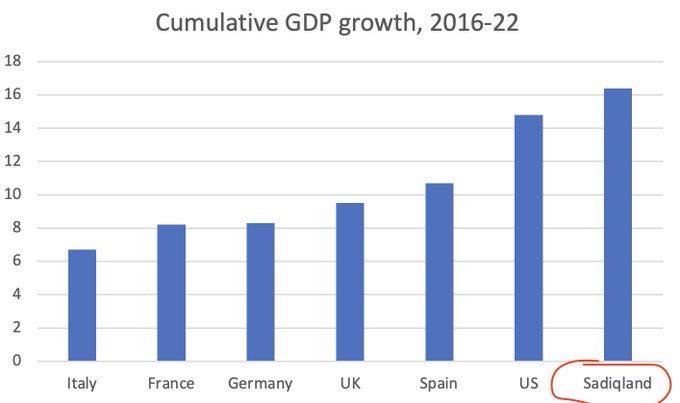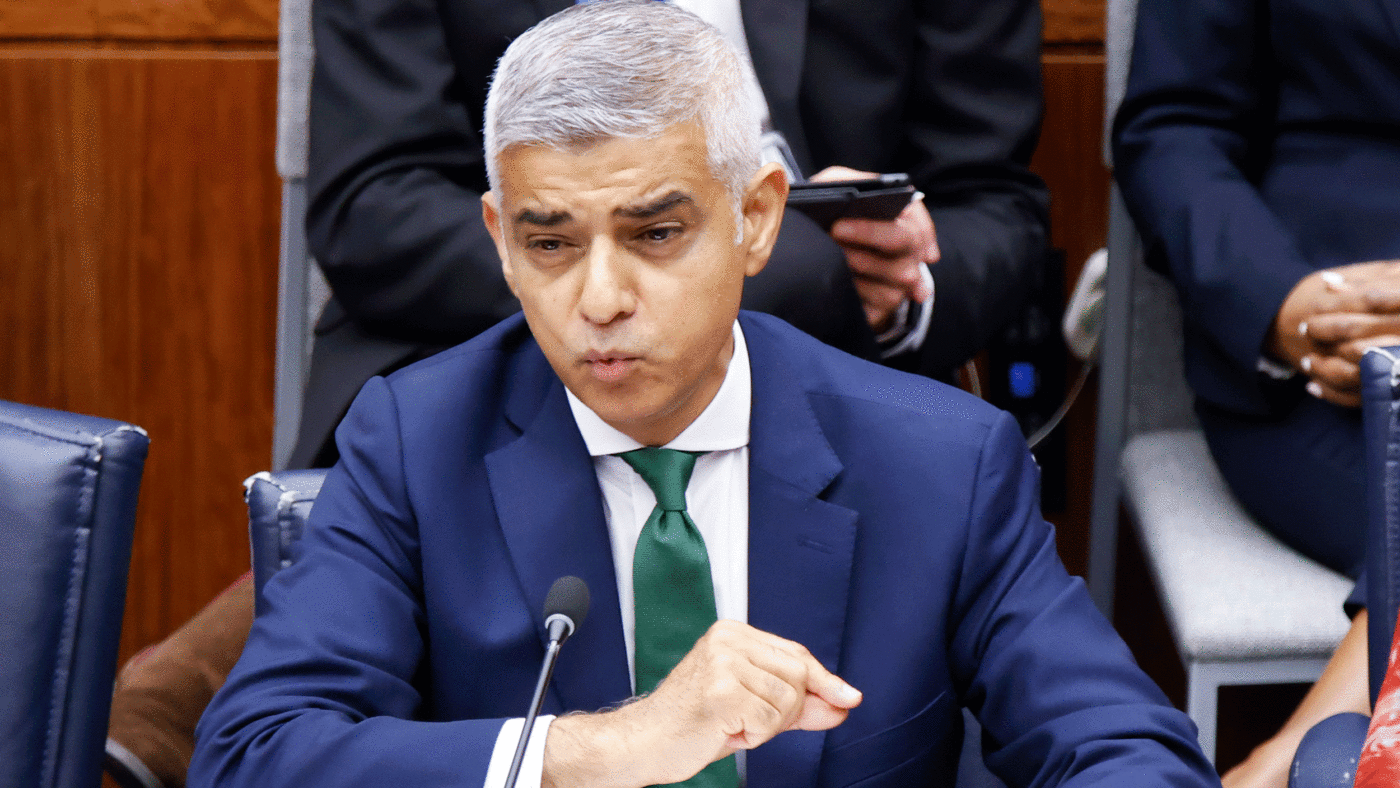Sadiq Khan’s new stats on the economic impact of Brexit have received widespread and breathless coverage, including in the international press. But on closer inspection, they appear to be inexcusably shoddy.
The Mayor commissioned new analysis from both Cambridge Econometrics and his own team at the Greater London Authority to show how much damage Brexit has done to Britain as a whole, and London in particular. But the core claims – in particular on growth and jobs – simply don’t stand up, whatever your position on Brexit.
His press release was headlined ‘New report reveals UK economy is almost £140bn smaller because of Brexit’. Below is the key chart from Cambridge Econometric’s modelling, estimating how much damage Brexit has already done, and how much more it’s going to.

.
Those figures are the product of pretty expensive economic modelling (apparently they cost £55,000, paid for from our taxes). But as I say, many of them fail the obvious test of common sense.
The core claim is that the UK economy is 6.3% smaller than it would have been if Brexit hadn’t intervened. This is the ‘Counterfactual’ scenario in the image above – based on adjusting various assumptions about investment, migration, trade and also carbon emissions taxation for some reason, and then running through Cambridge’s in-house model. The problem is that the 6.3% figure is catastrophically implausible.
Here’s a quick chart I put together of cumulative GDP change in various major economies between 2016 and 2022, based on World Bank data. ‘Sadiqland’ – in which the UK remained in the European Union, and thereby grew by an extra 6.3% – would have grown faster than America, and twice as fast as France or Germany. Does that sound convincing?

.
Here’s another way to look at that same claim. As Khan’s press release says, that 6.3% fall means that GVA (think of it as roughly equivalent to GDP, though the definitions are slightly different) would be £140bn larger if we’d stayed in the EU. I’ve indicated where that would put our GVA on the chart below. But that same chart shows it is incredibly hard to see us reaching that mark on anything like the existing trend lines pre-Brexit, unless you just ignore the pandemic.

.
Let’s look at another claim in the Mayor’s PR. ‘[The modelling] also calculates that there are nearly two million fewer jobs overall in the UK due to Brexit – with almost 300,000 fewer jobs in the capital alone.’ Again, let’s add a red mark to the employment data. Convincing?

.
As with the growth figures, the only way you get to that number of additional jobs is both heroic extrapolation, and ignoring the pandemic. And it gets worse. The modelling claims that there were only 35.3m jobs in the UK in 2023, whereas there would have been 37.1m if we hadn’t left the EU. But the ONS disagrees! It says there were far more than 35.3m jobs at the start of 2023. At least a million more. And many more still by the year’s end.
In a keynote speech last night in front of political and business leaders, which drew heavily on this analysis, the Mayor also said, ‘the Government needs to start mitigating the impact of Brexit by tackling London’s labour shortage, taking an approach to migration that is “informed by evidence, not prejudice”.’ So let’s look at what the evidence actually says.
Below is the data on payrolled employees in London. Since the Brexit vote, the number has gone up by 375,000. Of those, 228,000 were non-EU nationals as against 151,000 Britons. Creating more jobs for foreign workers than your own citizens hardly seems very restrictive – or prejudiced.

‘
Now, there is a small and unavoidable error in the calculations above. The 6.3% figure for how much ‘smaller’ UK GDP is thanks to Brexit is a 2023 figure, whereas the World Bank data I used only goes up to 2022. I did try to find Cambridge Econometrics’ estimates for each year from 2016. But I couldn’t. Which raises another problem.
If you read their report, every single chart is a projection from 2023 to 2035. There is no explanation of how its authors arrived at the 6.33%/£140bn figure, beyond it being what their model spat out – in defiance, as I’ve shown above, of all common sense.
But it gets still worse. In the section on GVA, the authors say their findings are similar to those in this report from the National Institute for Economic and Social Research (NIESR), in that they show initial damage from Brexit compounding over time. But they absolutely aren’t! The NIESR report estimates that UK GDP may be 2-3% lower due to Brexit, and that this may reach 5-6% of GDP by 2035. Khan’s team are essentially saying ‘it’s 6% now and will be 10% by 2035, yeah we’re pretty similar really’. But their estimate is massively larger. Twice as large, in fact, equating to many tens of billions of pounds in economic damage.
And here’s the kicker. This report is the follow-up to another commissioned by Khan from Cambridge Econometrics in 2018. That one estimated the GDP impact of a no-deal Brexit at 3% by 2030, compared to staying in the EU. Call me crazy, but I don’t see how you can go from ‘the most disruptive possible Brexit will cost us 3% of GVA by 2030’ to ‘a pretty amicable Brexit has already cost us 6% of GVA in 2023’ with a straight face, or at least without acknowledging the massive variance between the two estimates – especially when both of them were produced by the same in-house model.
Now, to head off possible criticism – I am not making any claims at all about the economic impact of Brexit, positive or negative. I am saying that, as with so many of Khan’s other statistics (cough, housebuilding, cough), it pays to check, check and check again.
That said, it is pretty depressing how many people, and news outlets, seem to have swallowed these estimates whole, despite them being prima facie implausible to say the least (or at least dependent on a non-Brexiting Britain having a truly fantastic growth record, in every sense).
If the first lesson of politics is ‘learn to count’, then for Londoners the second might be never to take their Mayor at his word – at least on anything to do with data.
Click here to subscribe to our daily briefing – the best pieces from CapX and across the web.
CapX depends on the generosity of its readers. If you value what we do, please consider making a donation.


